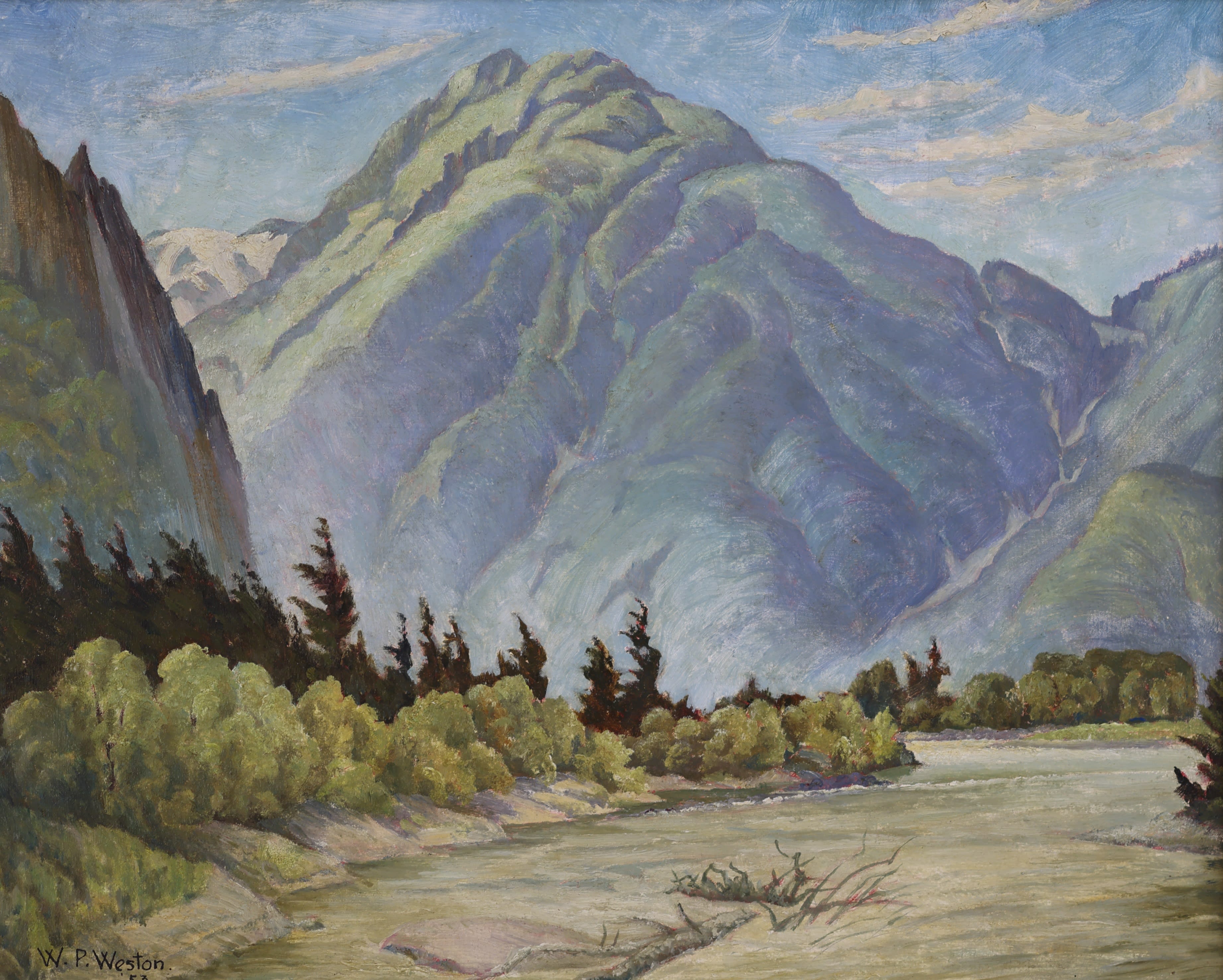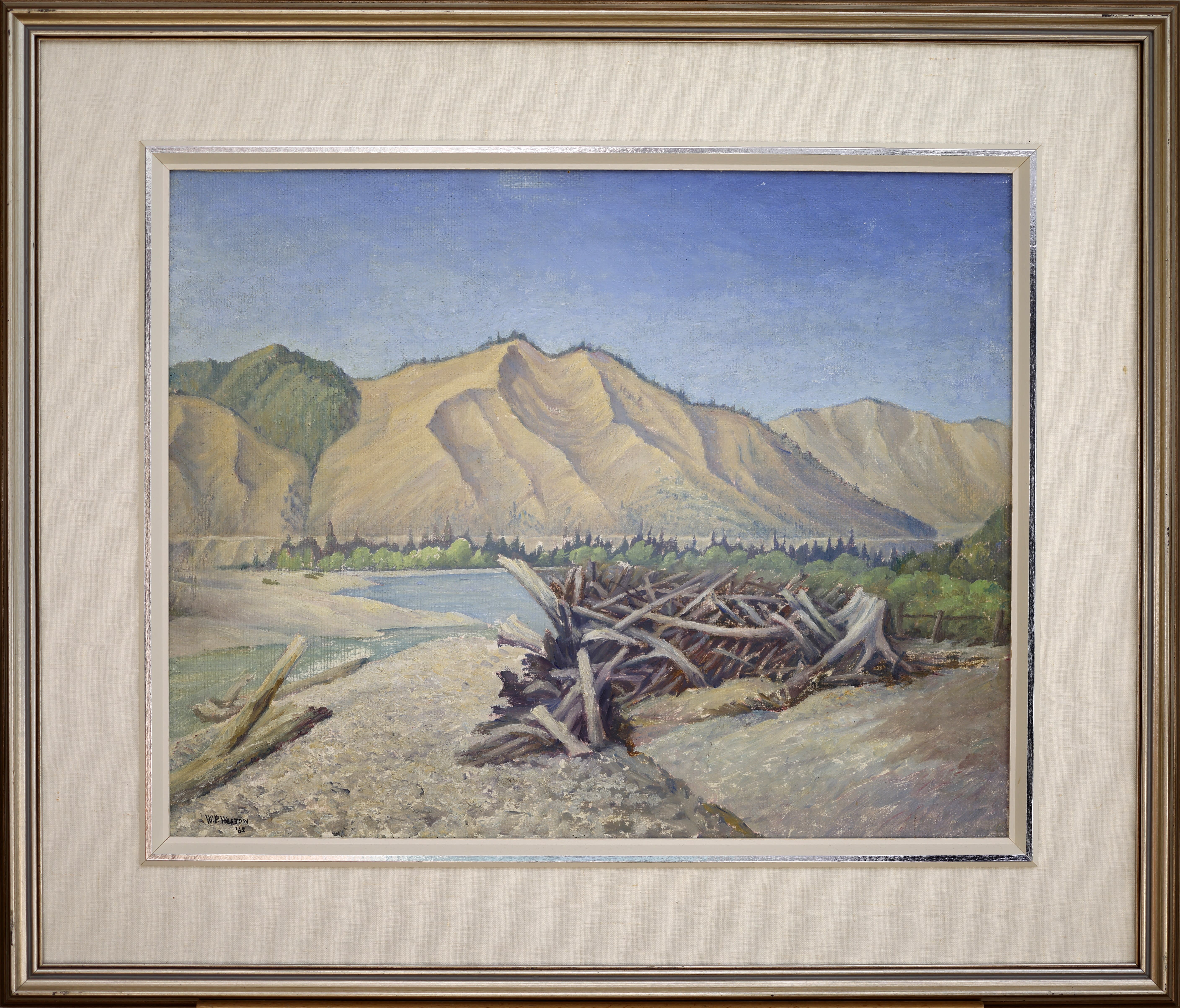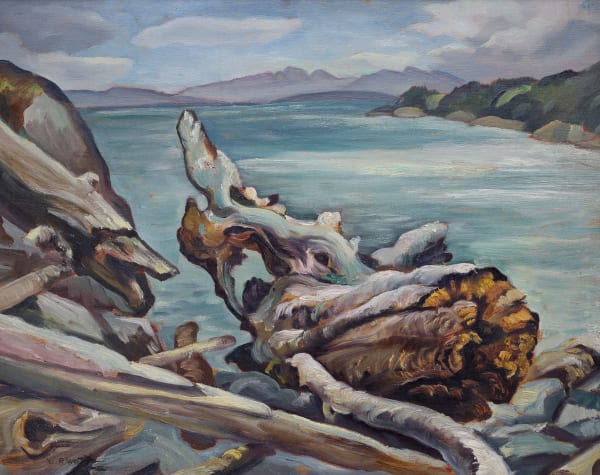William Percival Weston (W.P. Weston) (1879-1967): A British Artist's Canadian Journey
William Percy Weston's artistic journey is a testament to the transformative power of change and adaptation. Born in Battersea, London, England, Weston initially embarked on a career in education, training as a teacher at the Battersea Pupil-Teacher Center and the Brough Teacher Training College in London. However, it was his deep-seated passion for art that eventually led him across the ocean to a new life in Canada.

W.P. Weston; Driftwood, Garrow Bay, 1935
Upon arriving in Canada in 1909, W.P. Weston made his home in the vibrant city of Vancouver, British Columbia. As an artist, Weston sought to deepen his understanding of art and refine his skills. To achieve this, he pursued further education, enrolling at the Putney School of Art in London, England, where he honed his artistic talents.
Weston's transition to life in Canada marked the beginning of a new chapter in his artistic career. He commenced teaching at King Edward High School in Vancouver, a role that allowed him to share his passion for art with young, aspiring minds. The period from 1909 to 1914 saw him actively involved in the field of education.

W.P. Weston; The Fraser at Hope BC, 1953
One of the significant milestones in W.P. Weston's life was his appointment as Art Master of the Provincial Normal School. He served in this capacity until 1946, dedicating nearly four decades to nurturing and inspiring the next generation of artists. His dedication to teaching was unwavering, but he would eventually retire to fully embrace his passion for painting.
W.P. Weston's artwork, particularly his landscapes of British Columbia, earned him recognition and acclaim. It is in these landscapes that his deep appreciation for the natural beauty of Canada found its expressive form. In the 1920s, his artistic style underwent a transformation. Inspired by the Group of Seven, a collective of Canadian artists renowned for their distinct approach to the Canadian landscape, Weston began to adopt a more linear and decorative style. His compositions simplified, showcasing a more contemporary and modern approach to art.

W.P Weston; Kootenay Valley at Waldo, BC, 1962
A testament to Weston's contribution to Canadian art is his status as a charter member of the Canadian Group of Painters, an esteemed association that played a pivotal role in shaping the course of Canadian art history.
William Percy Weston's life story serves as a reminder of the artistic possibilities that can unfold when one is open to change, adaptation, and the transformative power of a new environment. His commitment to education and his passion for painting left a lasting legacy in the world of Canadian art, where his work continues to be celebrated and appreciated for its unique perspective on the Canadian landscape.




